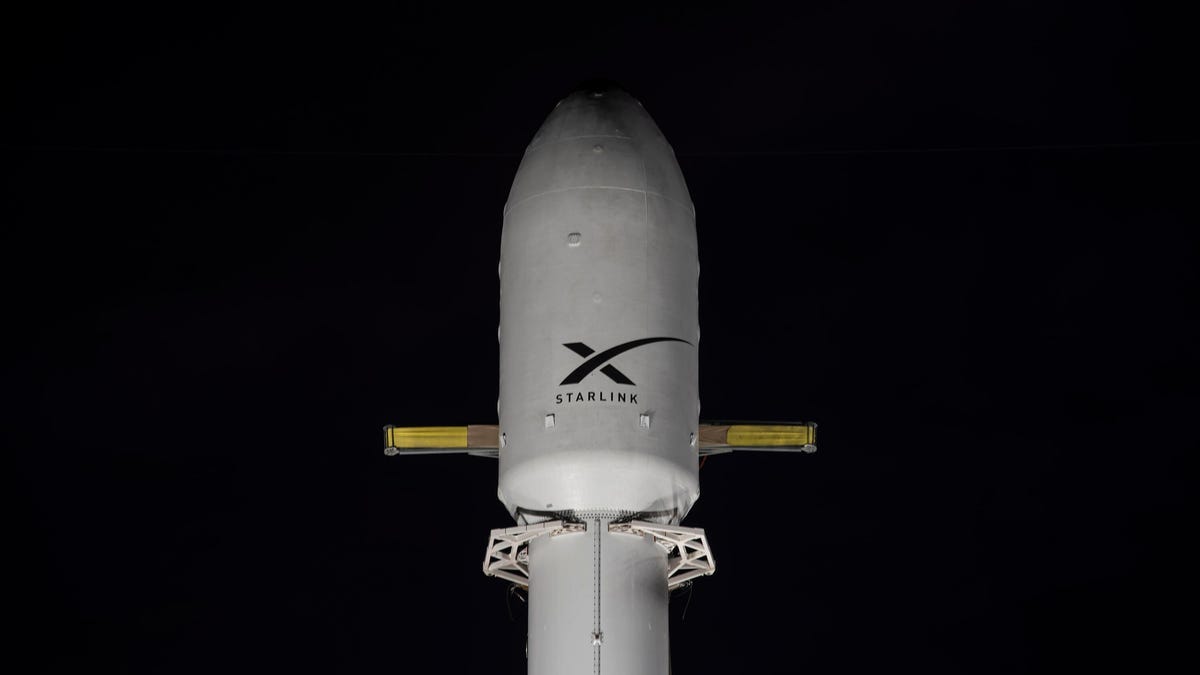SpaceX hits two new milestones with latest Starlink launch
The company is big on recycling. It just reused a rocket for the fourth time and flew with a previously used nose cone for the first time.

The fairing that shields 60 Starlink satellites awaits launch.
For the first time, SpaceX has launched and landed an orbital rocket booster on a fourth mission. And for a special bonus trick, Elon Musk's space company carried out Monday's mission -- the launch of its latest batch of broadband satellites -- using a recycled fairing, or nose cone, a first.
The same Falcon 9 has been launched and landed for the fourth time.
The Falcon 9 first-stage booster that sent 60 Starlink satellites into space from Cape Canaveral Air Force Station in Florida was previously used to launch commercial satellites in July and October of 2018. Its third launch was on Feb. 22, sending an Indonesian communications satellites into orbit and the Israeli Beresheet spacecraft toward an eventual crash landing on the moon.
After decades of space agencies dumping many of their boosters in the ocean after a single use, SpaceX has helped pioneer the landing and recycling of orbital rockets, with Musk aiming for the "holy grail" of a fully reusable rocket.
To that end, the company has also put considerable effort into recovering the fairings that shield the payload during launch, going so far as to try catching the halves of the nose cone using a barge equipped with a giant net.
The 60 Starlink satellites launched Monday join the few dozen that remain from the first big batch launched earlier this year. The company hopes to have an early version of its broadband service up and running in 2020, with the long-term goal of blanketing the globe with up to 42,000 of the small satellites in the years to come.
When the first group of 60 Starlink satellites hit the skies in May, the train of metal birds was easily identified by night sky watchers for a brief period, leading to alarm from astronomers who worried about the new reflective surfaces interfering with observations of the cosmos.
In response, SpaceX said it will make the surfaces of future Starlink satellites less reflective, but those changes were not put in place on the batch launched Monday, according to Spaceflight Now.
After sending the satellites to space, the Falcon 9 first stage landed on the droneship "Of Course I Still Love You" in the Atlantic Ocean. SpaceX is still aiming to catch both halves of the fairing in the next hour using two netted ships named "Ms. Tree" and "Ms. Chief."

